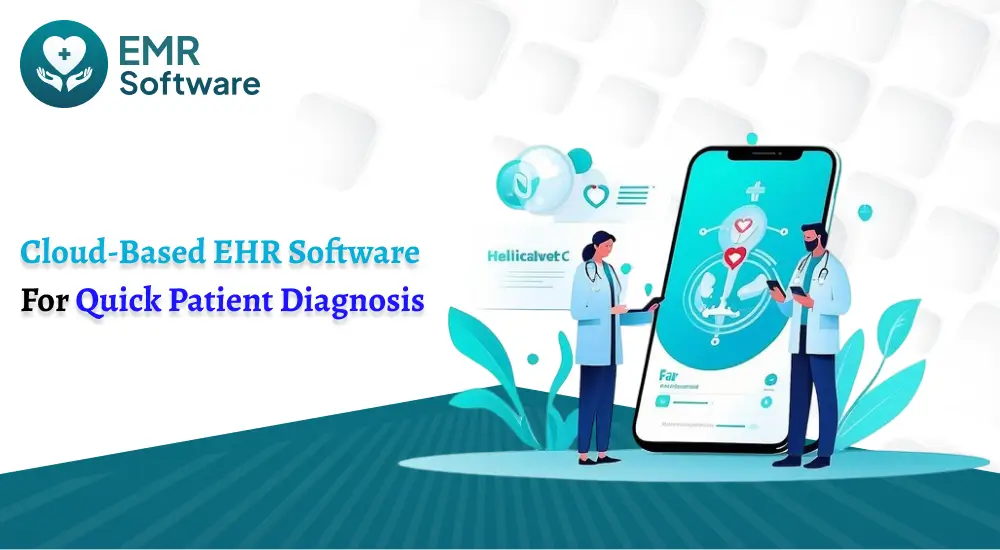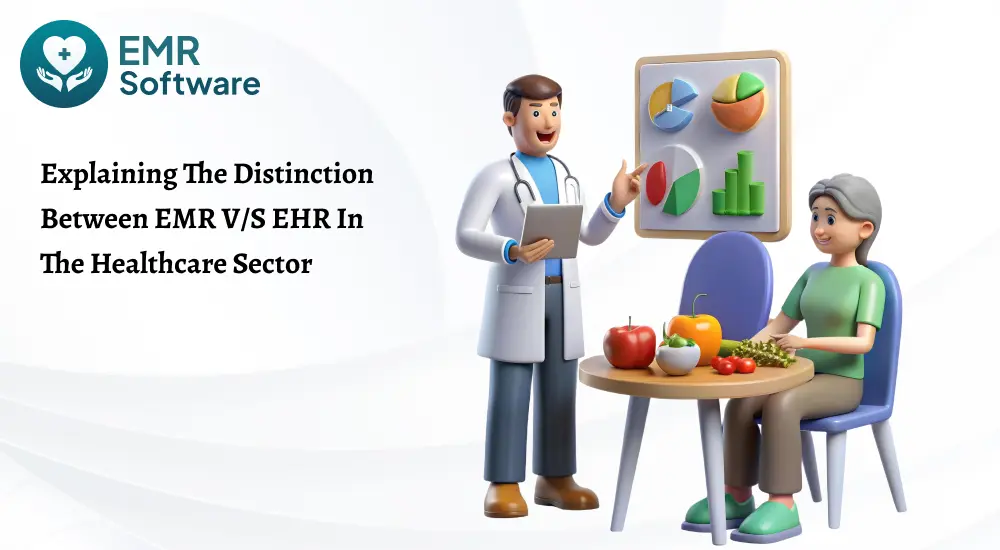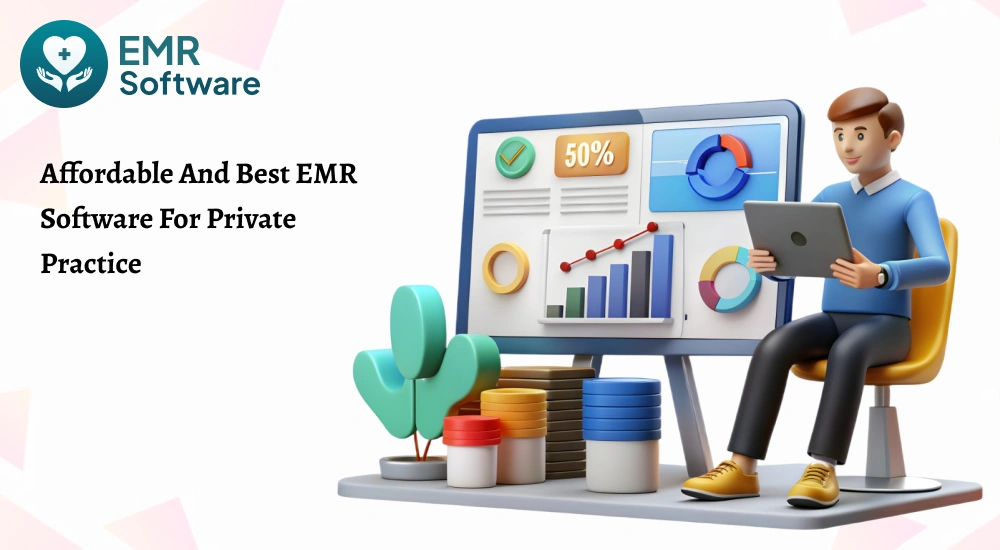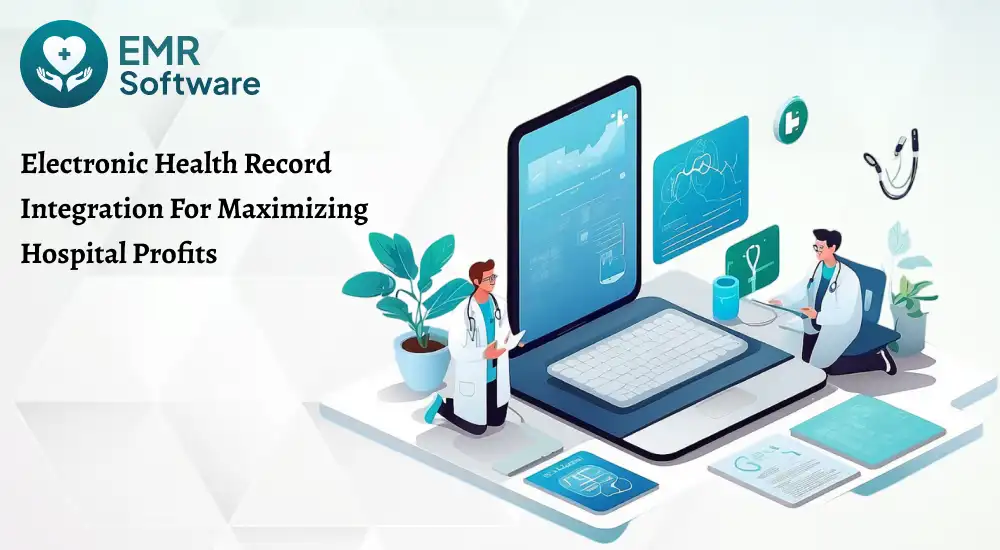Quick Summary
In this fastest-growing economy, where each of us struggle to maintain health and look impractical to track health performance. With the digitization in healthcare technology, you have the choice to monitor patient health on a daily basis and allow them to monitor physician actions. Not certain to this, the EHR software enhances your diagnostic procedure. Let’s find out more.
Introduction
Remarkable evolution happens with the electronic health record system software in the healthcare institutions. Molding the entire hospital eco-system from scheduling department to administering surgeon. Controlling surgeon duties, not easy as you think. However, an AI-powered EMR software assists you in executing duties.
Shifting from the traditional healthcare system, making it harder for you. Necessary to enhance your hospital growth, improve staff culture, reduce work burden, and enhance document efficiency. Furthermore, hospitals are able to accomplish the optimal care along with enhancing revenue.
If we take our eyes on the patient diagnosis, it needs assimilated patient records along with enhancing document accuracy, whether its MRI or CT scan or test report. The EHR software controls your real-time information, reduces document error, and enhances safety. Modernizing operational systems help a lot in patient diagnosis. Let’s leap into the insights.
Significance of Electronic Health Record Software In Value Based Care
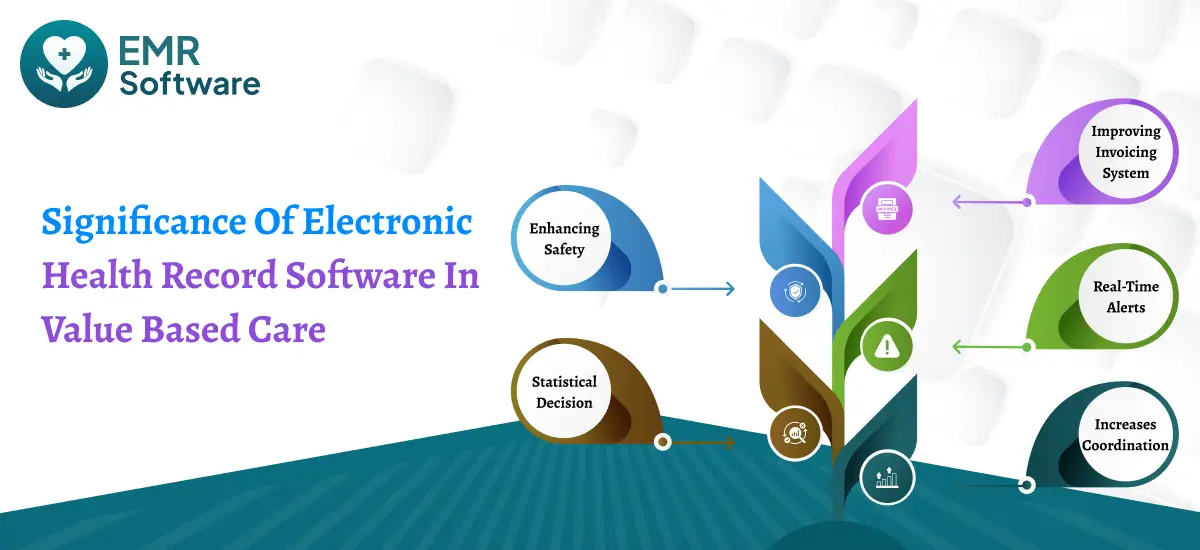
Without the innovative EHR system software, your healthcare documents, never be inaccurate or missing any figure. Handling your repetitive actions from crafting healthcare documents to create entries. Furthermore, it drafts the standardized forms, improves documentation workflow, and optimizes reimbursement process. Let’s see how it controls each of the patient activities with high-end care.
Enhancing safety
The EHR software, a vital technology in the modern world for excellent care delivery. Data security and proper documentation are the responsible factors for increasing patient safety and decreasing costs.
Once you accomplish, you are able to attract patients within some time. No doubt, regulations are compulsory, implements making it harder for you. The primary activity of electronic health record software, secure conversations and documentations through applying hospital protocols.
Eradicating the need to create duplicate files, limiting the accessibility of patient documents, enhancing treatment outcomes.
Statistical Decision
Retaining patient information in the most simplest format, it would be easy for any of them to retrieve it. The electronic health record system software utilizes information appropriately and eliminates all errors.
Processing of client details, replacing missing figures with the appropriate technique. Furthermore, the healthcare information converts into single chart-based reports. Furnishing the overview of saved information in terms of numerical numbers.
There is an option to share created reports to other physicians and any type of specialists. As a result, the electronic health record software utilizes for impactful decisions and mitigates future costs.
Increases Coordination
There are many providers, diverse specialists, nurses, and clerical personnel in the healthcare institutions. Contacting with each of them at the same time and sharing the valid information or documents, making the tasks more problematic without the electronic health record system software.
Allowing your hospital providers to seamlessly share patient medical reports or documents to other specialists for examining a patient case and taking suggestions. Moreover, not only helpful in regular clinical activities but also assists in the health crises situation.
Real-time Alerts
Healthcare innovative technologies like electronic health record system software, assisting you to never miss any activity, whether it is related with the patient or physician or general staff. However, the scenarios are different from each of them.
In the case of healthcare providers, automated notifications occur when the updated document, receive patient appointment requests, uploaded radiology report, or any message from any physician.
If we talk about patients, they get triggers when they receive reports, any physician message, and collect the reimbursement amount.
Clerical workers receive alerts for maintaining desirable inventories, patient updating information, receiving any provider or employee message, and upload documents by physician or radiologic technologists.
Improving Invoicing System
The EHR software captures the current information as per patient activity. From retaining the patient medical records, crafting invoices for assorted customers make it more smoother or simpler because of automating suggestions and filling blank spaces by ownself.
You can easily monitor the patient payment workflow and take follow-up for undue amounts. Furthermore, directly transferring a claim amount into the patient account and can track the date and time. Due to compiling client medical documents, it becomes easier to scrutinize patient cases and mitigates the risk of claim denials.
Unique Ways of EHR Software For Faster Patient Diagnosis
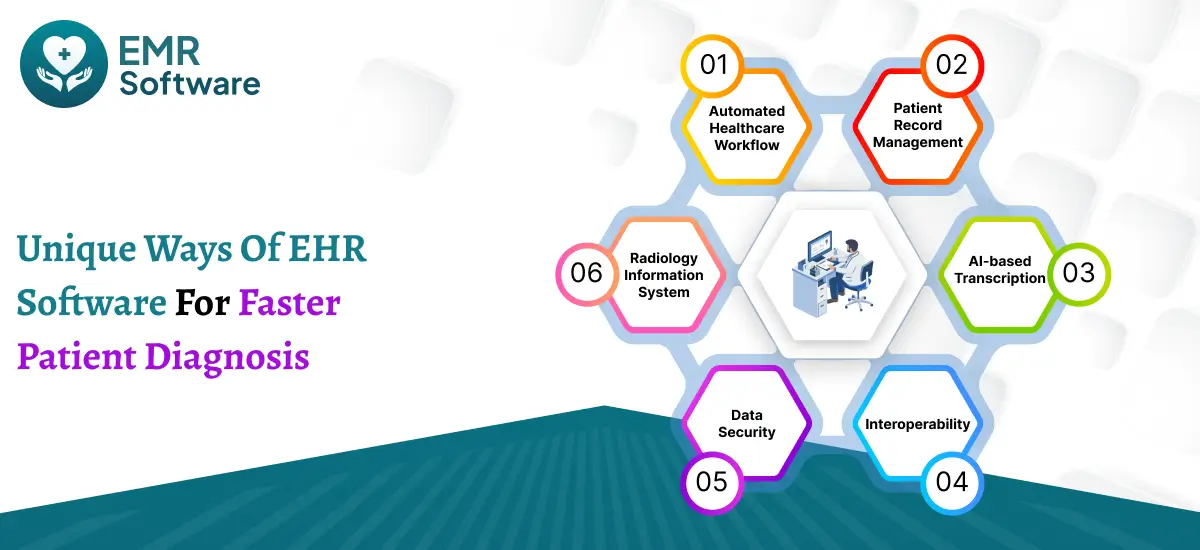
Based on the new healthcare survey, diagnostic mistakes lead to 30,000 to 50,000 deaths yearly. Your one incorrect decision, heavily impactful on your patient life and creating a question on healthcare management systems. What if it happens in your healthcare organization? To prevent this, you should set up the EHR software system at earliest. Comprehending How EHR software speeds up diagnosis processes with high accuracy.
Automated Healthcare Workflow
Traditional clinical workflows never provide that much of diagnostic accuracy and enhance the decision-making process. However, the state-of-art healthcare technology like the EHR software adopt the contemporary techniques for smart analysis and mitigate the documentation error. The electronic health record system software, fostering the modern clinical workflow with the following ways :
- Smart Documents
- Advanced techniques
- Operational management
- E-imaging system
- Analytical BI reports
Patient Record Management
The right AI healthcare technology keeps your client accounts in the most descriptive and securable manner. Moreover, physicians retrieve any patient medical documents from EHR systems and transmits among specialists after getting the due consent from clients.
Additionally, it gives you the report summary that mitigates physician activity, no need to read the complete records or information. Examining the previous prescriptions within a click, get the exhaustive idea of patient treatment and their current disease.
AI-based Transcription
For the healthcare institutions, crafting the meticulous healthcare documents with a zero error cannot be practically possible. The smart EHR software with current-edge technologies, assisting you to draft assorted hospital documents through the speech recognition.
The manual transcription and operational management takes on an aggregate 14 hours per week. Therefore, the electronic health record system is an excellent escape for decreasing provider burnout and increasing document efficiency.
Interoperability
Connecting varied similar healthcare systems and applications on the single platform. Seamlessly transferring clinical documents across hospital or healthcare systems. Moreover, it creates a marvelous network system because it brings pharmacists, lab technologists, 23+ medical specialists, and radiologists on the unified platform.
Let’s have a look what you got from the integrated healthcare systems :
- Enhanced communication
- Amplifies healthcare revenue
- Reduces organizational gaps
- Increases patient outcomes
- Minimize provider burden
Data Security
Healthcare data security is the main concern for every medical institution. If you are avoiding clinical protocols, you may suffer from the hefty losses and reduce the cash flow system.
Furthermore, the data encryption technique is one of the beneficial techniques for enhancing patient privacy.
There are other regulation techniques like controlling document accessibility, biometric authentication, and data minimization.
Radiology Information System
Administering a varied radiology duties from the creating medical images to store them appropriately. Moreover, they have the extensive authority to transfer radiology reports to clinical employees and physicians.
There is a high precision of radiology images and inspects them closely, discovering insightful information from saving medical images.
Enhancing Healthcare Outcomes With The Electronic Health Record System Software
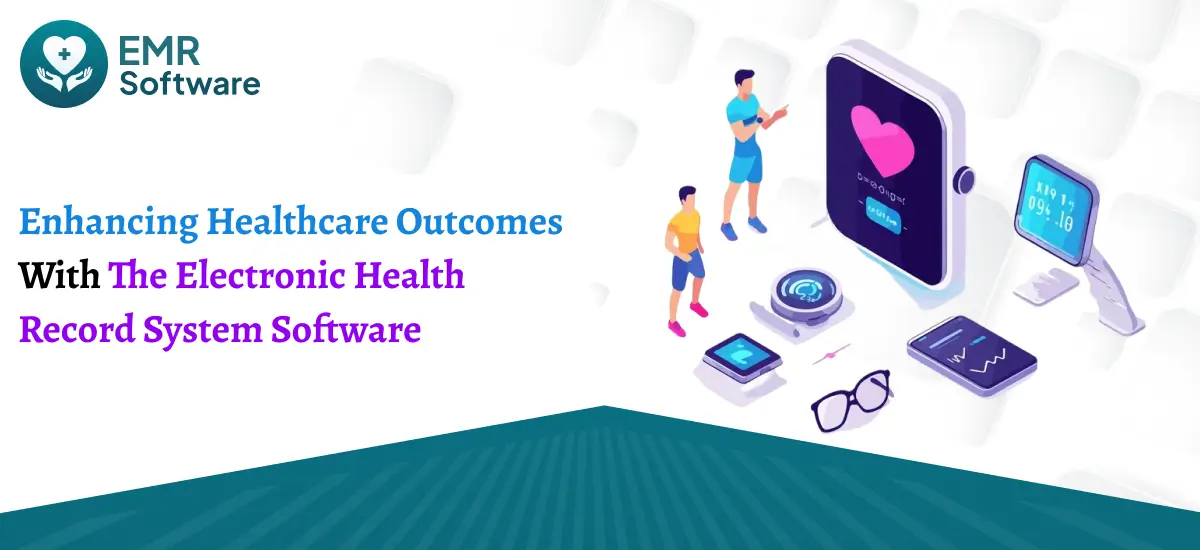
A conventional method of record keeping in the healthcare industry and increasing troubles day by day does not make any impact on the hospital infrastructure. Physicians need a well-structured platform whereas patients’ need value-based care.
However, the cloud-based electronic health record system software rescues from the variety of hospital challenges like documentation errors, decreases value-based care, minimizes patient engagement rate, outdated medical inventories, and mis-management in the administrative sector.
The EHR software upgrades the work environment, increases treatment results, improves patient information, and enhances document security. Furthermore, it transforms the mechanism of creating images, increases data accessibility, improves decision-making, and augments patient progress due to meticulous tracking of patient healthcare outcomes. As a result, it is the boon for caregivers, supporters for staff, and good patient assistance.
Conclusion
Meticulous healthcare technology improves diagnosis procedures and increases result quality. Electronic health records walked into the healthcare industry and fostering functions of high-end care. Furthermore, EHR software is best for value based care because it enhances safety, real-time alerts, improves the invoicing system, and increases coordination. We talked about the different EHR ways to augment patient diagnosis, which includes patient record management, interoperability, radiology information system, AI-based transcription, and radiology information system. Overall, it improves healthcare outcomes and creates impressive diagnosis workflows.
